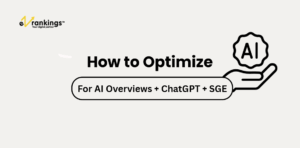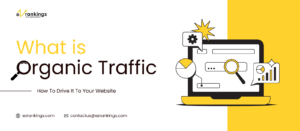How to Do Keyword Research for SEO in 4 Steps?
Keyword research today is much more than just finding high-volume search terms. With Google continuously evolving through AI-generated results, voice search, and better semantic understanding, the approach to keyword research has shifted. It’s now more strategic, user-focused, and intent-driven.
If you want your content to truly rank and reach the right audience, you need to move beyond basic SEO tactics. In this guide, we’ll take you through a simple four-step process for effective keyword research. You’ll learn how to better understand your audience’s needs, use the right tools, and create a keyword strategy that improves your visibility and drives meaningful results.
Step 1: Build Topic Clusters Based on User Intent
Before diving into specific keywords, start by focusing on broader topics that your brand should be associated with. These topics form the foundation for building topical authority, which is something Google increasingly prioritizes when determining rankings.
How to Start:
Think about your business from the perspective of your audience. What problems do you solve? What services do you offer? What are your potential customers interested in?
For example, if you run a digital marketing agency, don’t limit yourself to just targeting a term like “SEO services.” Instead, consider topics like how to grow organic traffic, generate B2B leads, improve local SEO, create strong content strategies, or tackle technical SEO issues.
These broader subjects can each be turned into focused content clusters, with individual pages or blog posts diving into related subtopics.
Pro Tips:
- Use Google’s “People Also Ask” and “Related Searches” sections to identify popular subtopics.
- Explore platforms like Reddit, Quora, and LinkedIn Groups to understand what real users are discussing.
- Use Google Trends to validate the popularity of a topic over time.
This step helps you map out areas where your brand can build authority and relevance, not just grab traffic.
Step 2: Fill Each Topic with Keyword Ideas
Now that you have clear topics, start identifying the actual keywords and phrases that people use when searching within that context. This is where your keyword research strategy really begins to take shape.
How to Do It:
To do this effectively, you can use popular keyword research tools like below. These tools allow you to enter one of your core topics, for example something like performance marketing, and generate a wide range of keyword suggestions.
- Google Keyword Planner
- Semrush
- Ubersuggest
- Ahrefs
- io
Start by entering your topic (e.g., “performance marketing”) and collect keyword suggestions. Look for:
- Variations and synonyms
- Question-based phrases (e.g., “how to increase email open rates”)
- Long-tail keywords (e.g., “best email marketing platform for e-commerce”)
Rather than only focusing on keywords with the highest search volume, aim for a mix of keywords that are relevant to your audience, have lower competition, and reflect what people are genuinely trying to find. This approach gives you a better chance of ranking and attracting the right kind of visitors to your website.
Bonus Ideas:
- Analyze your Google Search Console to see which keywords already bring traffic to your site.
- Use YouTube and TikTok auto-suggest to find trending queries for video content planning.
- Explore forum discussions and customer reviews for natural keyword phrases and pain points.
By the end of this step, you’ll have a categorized list of keywords mapped to each core topic.
Step 3: Prioritize Keywords Based on Intent, Volume & Opportunity
Keyword research isn’t about chasing every term you find. It is about being thoughtful and intentional. The focus should be on identifying keywords that match what your audience is genuinely searching for, that you can realistically rank for, and that align with your business goals. Instead of trying to rank for everything, aim to rank for what truly matters.
Understand the 4 Types of Search Intent:
Search intent is the reason behind a user’s query. It tells you what someone really wants when they type something into a search engine. Matching your content to the right intent is one of the most important parts of successful SEO.
- Informational (I) Intent– Informational intent is when someone wants to learn or understand something. They may search questions like what is conversion rate optimization. These users are not looking to make a purchase. They just want information or guidance.
- Navigational (N) Intent – Navigational intent refers to users who are trying to reach a specific website or page. Instead of typing the full URL, they search using the brand or page name to get there quickly. They already know where they want to go.
- Transactional (T) Intent – Transactional intent shows that the user is ready to take action. This could be making a purchase, signing up for a service, or downloading a resource. They have completed their research and are now looking for the best place to complete their goal.
- Commercial (C) Investigation – Commercial investigation intent means the user is in the decision-making stage. They are comparing products or services and are looking for reviews, comparisons or expert insights to help them make the right choice.
Analyze SERP Features:
Search the keyword in an incognito browser. Look at what Google is showing:
- Featured Snippets?
- Video results?
- Image packs?
- People Also Ask?
If blogs dominate the SERP, a product page won’t rank there. Align your content format with what the SERP favors.
Check Keyword Difficulty:
Use keyword research tools like Ahrefs, Semrush, or Moz to find out how competitive the keyword is. If your website has low authority, it is better to go after long-tail keywords with lower competition. This increases your chances of ranking and attracting qualified visitors.
Step 4: Refine with AI & SEO Tools
Once you have your list of keyword ideas, the next step is to organize and refine them. Group similar terms, remove irrelevant ones, and start shaping a focused SEO content plan.
Use AI Tools to Speed Up the Process
AI and SEO tools can help you work smarter by analyzing competitors, uncovering keyword gaps, and improving your content strategy.
Some helpful tools include:
- Surfer SEO and Frase.io: These tools analyze top-ranking pages for your target keywords and suggest related terms to include in your content.
- ChatGPT: Useful for generating keyword variations, outlining content ideas, and crafting user-focused questions.
- Clearscope: Helps improve keyword relevance and content quality in real time as you write.
- Answer The Public: Great for discovering question-based and long-tail keyword suggestions, especially helpful for voice search and featured snippets.
Organize & Segment:
Build a keyword mapping sheet to plan your content effectively. Include columns such as:
- Keyword
- Search Volume
- Intent Type
- Keyword Difficulty
- Page Type (Blog/Product/Service Page)
- Current Ranking (if applicable)
This sheet becomes your working SEO content planner. It helps you assign keywords to the right pages and identify where new content is needed to fill gaps in your strategy.
Final Thoughts
Keyword research in 2025 is about depth, not just data. You must understand your users’ goals, predict how they search (whether by typing, talking, or prompting an AI), and provide answers that are structured for visibility and value.
Rather than chasing keywords in isolation, focus on building content ecosystems around core topics. This not only helps you rank across hundreds of variations but also establishes your brand as an expert in the eyes of both users and search engines.
If you need expert support to build a winning keyword strategy and content plan, connect with EZ Rankings – the best SEO Company for businesses aiming for long-term results. Let’s unlock growth together. Reach out today.






